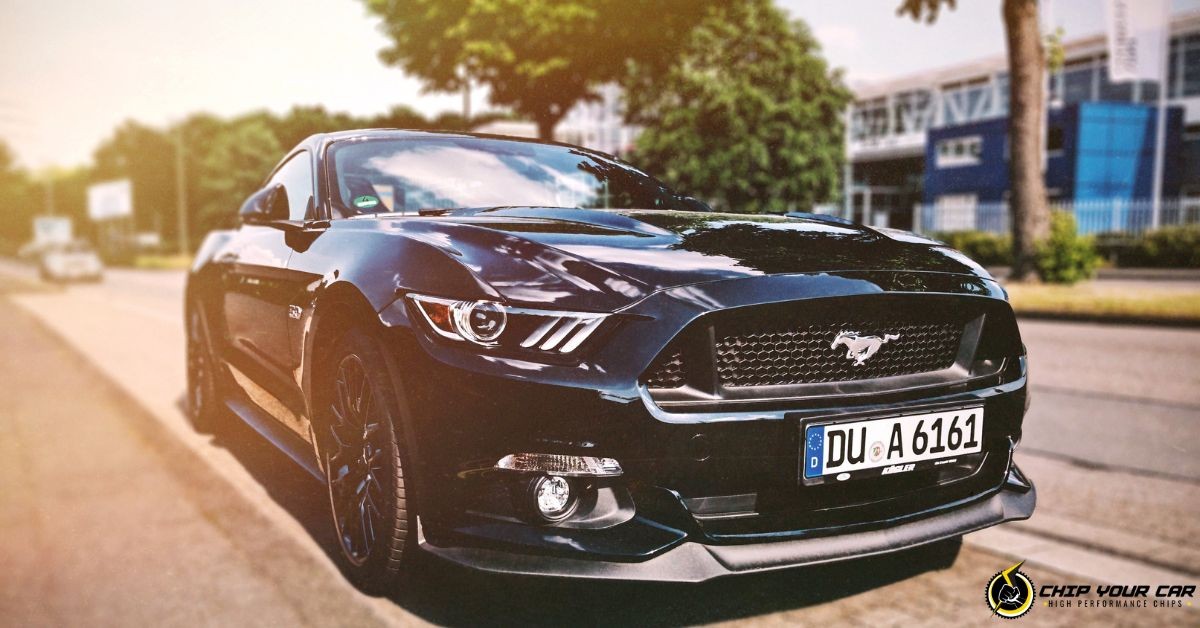Installing a premium performance chip in your vehicle is a straightforward upgrade that unlocks a range of benefits. Similar to enhancing your car with aftermarket parts, a performance chip modifies your vehicle’s computer to boost speed, improve fuel efficiency, and increase overall performance. If you’re considering purchasing a performance chip, understanding the installation process is essential. This guide will walk you through each step to ensure a successful installation.
Step-by-Step Guide to Installing Your OBD2 Performance Chip
Step 1: Prepare Your Vehicle
Before you begin the installation, ensure your vehicle is turned off. While the original article mentions starting the vehicle, for safety and to ensure proper chip connection, it’s best to proceed with the ignition off. Locate your car keys and ensure the engine is not running before proceeding to the next step.
Step 2: Locate the OBD2 Port
The next step is to find your vehicle’s OBD2 port. This port, also known as the On-Board Diagnostics port, is typically located under the dashboard on the driver’s side. You might find it near the steering column or beneath the dash panel. The OBD2 port is designed with 16 pins and serves as the connection point for diagnostic tools and, in this case, your performance chip. This port allows access to your vehicle’s computer system for performance enhancements and error readings.
Step 3: Inspect and Clean the OBD2 Port
Once you’ve located the OBD2 port, take a moment to inspect it. Check for any dust, debris, or obstructions that might prevent a clean connection. If necessary, gently clean the port using a soft, dry cloth or compressed air. Ensuring a clean port is crucial for proper contact and optimal performance of your new chip.
Step 4: Insert the Performance Chip
Now, take your performance chip and carefully plug it into the OBD2 port. Ensure it’s firmly seated and properly connected. After inserting the chip, wait for approximately 15 seconds. Following this brief pause, locate the SYNC/RESET button on the performance chip. Press and hold this button for another 15 seconds. This synchronization process is vital for the chip to communicate effectively with your vehicle’s computer system.
Step 5: Calibration Drive
After the chip is installed and synced, the next crucial step is calibration. For the performance chip to fully calibrate and optimize your vehicle’s performance, you need to drive your car for approximately 150 miles. This driving period allows the chip to learn your vehicle’s driving patterns and make precise adjustments for the best results. This 150-mile calibration doesn’t need to be completed in one go; it will naturally occur during your daily driving over time.
Step 6: Monitoring Performance (Optional)
 front off a black Mustang – Chip Your Car performance chip
front off a black Mustang – Chip Your Car performance chip
While not mandatory, you can monitor your performance chip’s effectiveness. One way is to visit a local mechanic and request a vehicle system readout. Alternatively, for real-time performance data, consider purchasing a Performance Monitor System. These systems often plug into the OBD2 port and connect via Bluetooth or Wi-Fi to your smartphone or a dedicated display. A performance monitor provides instant insights into your vehicle’s performance metrics, keeping you informed about the enhancements from your new chip.
Benefits of Installing an OBD2 Performance Chip
Installing a performance chip offers several compelling advantages for vehicle owners looking to enhance their driving experience:
- Increased Horsepower and Torque: A primary benefit is the noticeable increase in your vehicle’s horsepower and torque. Performance chips are designed to boost these figures, often adding up to 60 extra horsepower, resulting in improved acceleration and overall engine power.
- Improved Fuel Efficiency: Beyond power gains, performance chips contribute to better fuel economy. Users typically experience a 4-6 mpg improvement on average. These fuel savings can accumulate significantly over time, translating to substantial cost savings on fuel.
- Cost-Effective Performance Upgrade: Compared to traditional modifications that involve installing custom parts, a performance chip offers a more economical route to performance enhancement. It’s a DIY-friendly installation, saving on labor costs, and provides a significant performance boost for the investment.
Understanding How OBD2 Performance Chips Work
Performance chips operate by sending a consistent signal stream to your vehicle’s data sensors. This signal interacts with the factory Engine Control Module (ECM), prompting it to optimize various engine parameters. The ECM then adjusts the fuel and air mixture, enhances spark and timing, and can increase boost pressure in turbocharged vehicles. These adjustments collectively result in improved engine performance and efficiency.
Important Considerations After Installation
To ensure optimal and continuous performance from your OBD2 chip, remember these key points:
- Keep the Chip Installed: For the performance enhancements to remain active, the chip must stay plugged into the OBD2 port. Removing it will deactivate the performance enhancements.
- Use High-Grade Fuel for Optimal Performance: To maximize the benefits of your performance chip, especially for performance gains, using high-grade fuel is recommended. Premium fuel allows the engine to leverage the chip’s adjustments more effectively.
- Simple Removal Process: If you decide to remove the performance chip, ensure your engine is turned off before unplugging it from the OBD2 port. Once removed, and after restarting your vehicle, the system will revert to its original factory settings.
- LED Lights are for Design: Don’t be concerned about the flashing lights on the performance chip. These lights are a standard part of the design and indicate that the chip is operational; they are not indicators of performance levels or issues.
In conclusion, installing an OBD2 performance chip is a quick and efficient way to boost your vehicle’s performance and fuel economy. It’s a user-friendly upgrade that delivers noticeable results, making it a popular choice for car enthusiasts seeking enhanced driving dynamics.